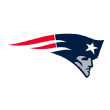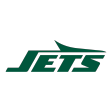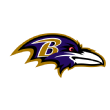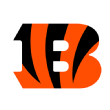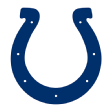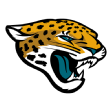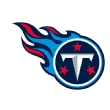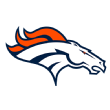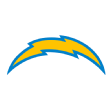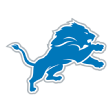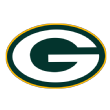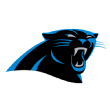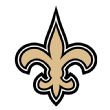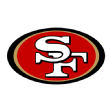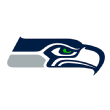Best small-college studs ever for all 32 NFL teams: Payton, Rice, McNair and more

You don't have to play at a traditional college football power to achieve NFL stardom. Former Chicago Bears running back Walter Payton showed us that. San Francisco 49ers receiver Jerry Rice showed us, too. So did the other 30 names on our small-school studs list picked by NFL Nation reporters. In fact, you don't even have to be drafted (see Larry Little, Malcom Butler, Jim Hart and Dave Krieg).
With the 2020 NFL draft coming up on April 23-25 (ABC, ESPN, ESPN app and NFL Network), prospects across the country should keep in mind that it's not where you start but where you finish. And for many of these players, that was the Hall of Fame.
Jump to:
ARI | ATL | BAL | BUF | CAR | CHI | CIN
CLE | DAL | DEN | DET | GB | HOU | IND
JAX | KC | LV | LAC | LAR | MIA | MIN
NE | NO | NYG | NYJ | PHI | PIT | SF
SEA | TB | TEN | WSH
AFC East
Buffalo Bills
Andre Reed, wide receiver
College: Kutztown University
Years with team: 1985-99
This one's easy. The Hall of Fame receiver played 15 seasons for the Bills, who drafted him in the fourth round out of tiny Kutztown University of Pennsylvania. He made seven straight Pro Bowls from 1988 to 1994, which also included four straight trips to the Super Bowl. His most notable moment as a Bill is likely a three-touchdown performance (all in the second half) to help Buffalo overcome a 32-point deficit in its AFC wild-card victory over the Houston Oilers in 1992. Reed ranks in the top 20 all time in career receiving yards, receiving touchdowns and receptions and is the Bills' career leader in each category. -- Marcel Louis-Jacques
Miami Dolphins
Larry Little, guard
College: Bethune-Cookman
Years with team:1969-80
The Dolphins acquired Little via a trade with San Diego in 1969 after he spent his first two seasons with the Chargers. Little was a 1967 undrafted free agent who immediately became a Pro Bowl player and was elected to the Pro Football Hall of Fame in 1983. Little was one of the key cogs for the Dolphins' offense, paving the way for running backs such as Larry Csonka and Mercury Morris. Little was also an important member of the 1972 and 1973 Super Bowl champion Dolphins. Little was named first-team All-Pro for five consecutive seasons from 1971 to 1975 and landed on the NFL's 1970s All-Decade team. Little forged a path from unheralded, undrafted player from the SWAC to one of the best to ever don a Dolphins uniform. -- Cameron Wolfe
New England Patriots
Malcolm Butler, cornerback
College: West Alabama
Years with team: 2014-17
Signed as an undrafted free agent, Butler was the 90th player on the 90-man roster at the time. The ultimate long shot. And while he attended West Alabama, he also earned a "degree" from "Popeye's State," as he was working at Popeye's for a stretch of time as he navigated some obstacles in his life and in his college career. All Butler went on to do with the Patriots was make arguably the single greatest play in Super Bowl history to help beat the Seahawks in dramatic fashion in Super Bowl XLIX. Tom Brady, who gave Butler his MVP truck, said it best: "Thank God for Malcolm Butler." -- Mike Reiss
New York Jets
Wayne Chrebet, wide receiver
College: Hofstra
Years with team: 1995-2005
He's one of the best small-school stories in the history of the sport. He signed as an undrafted free agent out of Hofstra University, the Long Island school that housed the Jets' year-round facility at the time. Chrebet was such a long shot (10th receiver on a 10-man depth chart) that he was stopped at the security gate on the first day of training camp because the guard thought he was an autograph-seeking fan. Undersized but deceptively strong and quick, he redefined the slot receiver position. He inspired players such as Julian Edelman and Danny Amendola, both of whom refer to Chrebet as "The Godfather" of slot receivers. His career was cut short because of concussions, but he finished with 580 catches, 7,365 yards and 41 touchdowns. -- Rich Cimini
AFC North
Baltimore Ravens
Joe Flacco, quarterback
College: Delaware
Years with team: 2008-18
In the 2008 draft, owner Steve Bisciotti wanted the Ravens to trade up to get Matt Ryan, but team officials persuaded him the better move was trading back to No. 18, where they got a strong-armed passer from Delaware. Flacco stopped the Ravens' quarterback carousel (15 starting quarterbacks in the franchise's first 12 seasons) and built a legacy defined by postseason success. He led Baltimore to 10 playoff victories during his 11 seasons (only Tom Brady delivered more in this span). He guided the Ravens to three AFC Championship Games. And, in 2012, he carried the franchise to a Super Bowl title by going on a run matched only by Joe Montana, throwing 11 touchdowns and no interceptions. -- Jamison Hensley
Cincinnati Bengals
Ken Riley, cornerback
College: Florida A&M
Years with team: 1969-83
Riley seamlessly made the transition to cornerback after spending his college days as Florida A&M's starting quarterback. He menaced NFL passers during his 15-year career and tallied 65 total interceptions, good for fifth all time and easily a franchise record that will be nearly impossible to break. His name isn't as notable as that of former Bengals quarterback Ken Anderson, another small-school product with Hall of Fame numbers, but he deserves some love for an unheralded career. -- Ben Baby
Cleveland Browns
Leroy Kelly, running back
College: Morgan State
Years with team: 1964-73
The Browns drafted Kelly out of Morgan State in the eighth round of the 1964 draft. Playing behind the legendary Jim Brown, Kelly immediately became an NFL champion in his first season. When Brown retired two years later, Kelly became an All-Pro in his first season as the starter, then won rushing titles the next two years. He was voted into the Pro Football Hall of Fame in 1994. -- Jake Trotter
Pittsburgh Steelers
Ben Roethlisberger, quarterback
College: Miami (Ohio)
Years with team: 2004-present
Taken with the No. 11 pick in the 2004 draft, Roethlisberger entered his rookie season as the No. 3 quarterback on the team. But he got on the field earlier than planned when Tommy Maddox suffered an injury in Week 2 and backup Charlie Batch was already sidelined (knee). A week later, Roethlisberger got his first start and led the Steelers to a 13-3 win against the Dolphins. He never relinquished the starting job, making 216 starts in 16 seasons in Pittsburgh. Roethlisberger has played in three Super Bowls with two wins and has been selected to the Pro Bowl six times. After an injury-shortened 2019 season, Roethlisberger, 38, is eyeing a comeback in 2020 with a surgically repaired elbow and has expressed confidencehe'll be at full strength when the season starts. -- Brooke Pryor
AFC South
Houston Texans
Jacoby Jones, wide receiver
College: Lane College
Years with team: 2007-11
Since the Texans are a relatively new franchise, there isn't a long list of candidates to choose from. The pick is Jones, who was drafted by Houston in the third round of the 2007 draft out of Lane College. Jones spent five seasons in Houston, contributing at receiver and as a returner. His best season with the Texans came in 2010, when he caught 51 passes for 562 yards and three touchdowns. -- Sarah Barshop
Indianapolis Colts
Robert Mathis, defensive end
College: Alabama A&M
Years with team: 2003-16
Mathis, who was selected in the fifth round of the 2003 draft, teamed with Dwight Freeney to form one of the best pass-rushing duos in the NFL. Mathis played with a chip on his shoulder because some scouts believed he would struggle at the next level because he went to a small college, was too small and wasn't quick enough to get to the quarterback in the NFL. That motivation must've worked because Mathis is the Colts' franchise leader in sacks (123) and was named to the Pro Bowl five times. His best season was in 2013, when he had 19.5 sacks. -- Mike Wells
Jacksonville Jaguars
Jimmy Smith, wide receiver
College: Jackson State
Years with team: 1995-2005
He was a second-round draft pick by Dallas in 1992 but dealt with a broken leg, appendicitis and an abdominal infection related to the appendicitis in his first two years (zero catches) before being waived. He was out of football in 1994, but Jaguars coach Tom Coughlin gave him a tryout in 1995 and signed him. Smith went on to become the franchise's career leader in receptions, yards and TD catches. He had nine 1,000-yard seasons, including seven in a row (1996-2002), and made five Pro Bowls. His 12,287 yards receiving ranks 23rd in NFL history and is more than those of Charlie Joyner, Michael Irvin, Lance Alworth or Don Maynard, all of whom are Hall of Famers. -- Michael DiRocco
Tennessee Titans
Steve McNair, quarterback
College: Alcorn State
Years with team: 1999-2005
The Houston Oilers selected McNair with the No. 3 pick in the 1995 NFL draft. McNair helped lead Tennessee to a Super Bowl appearance in 1999, the franchise's first season being known as the Titans. He went on to lead the Titans to three more playoff appearances and was named to three Pro Bowls. McNair's best season was in 2003, when he led the NFL with a 100.4 passer rating and was named co-MVP with Peyton Manning. -- Turron Davenport
AFC West
Denver Broncos
Shannon Sharpe, tight end
College: Savannah State
Years with team: 1990-99, 2002-03
The Broncos have had plenty of success with players from smaller programs such as Rod Smith and Billy Thompson, but Sharpe leads the way. The Hall of Famer was selected in the seventh round of the 1990 draft. He arrived as a wide receiver but was switched to tight end by Dan Reeves' staff. He won three Super Bowl rings -- two with the Broncos, one with the Ravens -- and was named to eight Pro Bowls. He was enshrined in the Pro Football Hall of Fame's Class of 2011. -- Jeff Legwold
Kansas City Chiefs
Emmitt Thomas, cornerback
College: Bishop College
Years with team: 1966-78
The Chiefs have plenty of great candidates here because in their early seasons they brought in many players from historically black colleges and universities, including defensive tackle Buck Buchanan (Grambling), linebacker Willie Lanier (Morgan State) and receiver Otis Taylor (Prairie View). Those schools sent many others to the NFL, though, so the pick here is Thomas, a Pro Football Hall of Famer who went to Bishop College in Dallas. Bishop closed in 1988. -- Adam Teicher
Los Angeles Chargers
Antonio Gates, tight end
College: Kent State
Years with team: 2003-18
The Chargers signed Gates as an undrafted free agent in 2003 from Kent State University, where he did not play football but starred in basketball. In 16 seasons with the Chargers, Gates was an eight-time Pro Bowl selection and a three-time All-Pro. Gates had an undeniable connection with Philip Rivers, as the duo connected on 90 touchdowns, an NFL record between a quarterback and tight end. Gates' 116 touchdown receptions is the most by a tight end in NFL history. -- Lindsey Thiry
Las Vegas Raiders
Gene Upshaw, left guard
College: Texas A&M-Kingsville
Years with team: 1967-81
The Raiders drafted Upshaw at No. 17 in the first common NFL-AFL draft in 1967. He started every regular-season game from his rookie year through the start of the 1981 season, a streak of 207 straight. This was a tough call, as the Raiders have other Hall of Famers from small schools such as left tackle Art Shell (Maryland-Eastern Shore), cornerback Willie Brown (Grambling State) and defensive lineman Howie Long (Villanova). Upshaw gets the call, by a smidge, by making seven Pro Bowls, earning five first-team All-Pro selections and being the only player to appear in the Super Bowl in three different decades with the same team. He played in a franchise-record 24 postseason games and is on the NFL 100 All-Time Team. He later ascended to executive director of the NFLPA. -- Paul Gutierrez
NFC East
Dallas Cowboys
Larry Allen, guard
College: Sonoma State
Years with team: 1994-2005
This was a difficult decision, especially with Hall of Famers such as Rayfield Wright (Fort Valley State) and Cliff Harris (Ouachita Baptist) around, but Allen is the best offensive lineman in team history and was a 10-time Pro Bowler and seven-time All-Pro. He was as dominant as any offensive lineman in the game with his strength and athleticism. He was a second-round pick (No. 46 overall) at a time when there were still some secrets in the draft. He performed well at Sonoma State as well as in the Shrine Game, but teams worried about his small-school background. After his rookie season, Allen started every game he played for the Cowboys and helped them win a Super Bowl. -- Todd Archer
New York Giants
Rosey Brown, offensive tackle
College: Morgan State
Years with team: 1953-65
Lots of good choices here, especially with Michael Strahan (Texas Southern) and Phil Simms (Morehead State) in the mix. But Brown has more Pro Bowl (nine) and All-Pro (six) selections than any Giant not named Lawrence Taylor. Not bad for an offensive tackle selected in the 27th round as the 321st overall pick out of Morgan State. Brown played his entire 13-year career with the Giants, won an NFL championship in 1956 and earned a spot in the Pro Football Hall of Fame. -- Jordan Raanan
Philadelphia Eagles
Wilbert Montgomery, running back
College: Abilene Christian
Years with team: 1977-84
Terrell Owens of Tennessee-Chattanooga is one of the best small-school players of all time, but is he an Eagle? A Niner? A Cowboy? There is no such confusion with Montgomery, who spent eight of his stellar nine years in the NFL rewriting Philadelphia's record books. A sixth-round pick, Montgomery led the league in all-purpose yards in 1979 with 2,012 en route to his second consecutive Pro Bowl bid. The next season, he created one of the most memorable plays in franchise history, a 42-yard touchdown run against the hated Cowboys in the NFC Championship Game to propel the Eagles to their first Super Bowl. He still holds team records for most 100-yard games in a single season (eight) and career attempts (1,465) and is second in career rushing yards (6,538) behind only LeSean McCoy (6,792). -- Tim McManus
Washington Redskins
Darrell Green, cornerback
College: Texas A&I
Years with team: 1983-2002
Although London Fletcher, from Division III John Carroll, played well as he finished his career with Washington, nobody stood out more than Green. He starred at Division II Texas A&I (now A&M-Kingsville) and was the 28th pick in the draft. Green became an immediate starter, then made seven Pro Bowl and four All-Pro teams before earning the biggest honor of them all: the Hall of Fame. He is the oldest defensive back to ever play in the NFL, and he played the most games (295) of any defensive player in history.-- John Keim
NFC North
Chicago Bears
Walter Payton, running back
College: Jackson State
Years with team: 1975-87
The Bears drafted Payton out of Jackson State in the first round (No. 4) of the 1975 NFL draft. Payton is one of the greatest players in NFL history. The league's leading career rusher (16,726) at the time of his retirement, Payton was named first-team All-Pro seven times, was voted to nine Pro Bowls and helped Chicago win Super Bowl XX, the only Super Bowl victory in franchise history. Payton was elected into the Pro Football Hall of Fame in 1993. -- Jeff Dickerson
Detroit Lions
Dick "Night Train" Lane, defensive back
College: Scottsbluff Junior College
Years with team: 1960-65
This was incredibly difficult -- to the point where I had actually chosen Lem Barney (Jackson State) at first before making the switch. Lane edged out Barney with his three first-team All-Pro selections and seven Pro Bowls. His 68 career interceptions for 1,207 yards outdid Barney's 56 interceptions for 1,077 yards. Barney played his entire career in Detroit; Lane played six seasons with the Lions, picking up two of his All-Pro nods and three of his Pro Bowl berths. Both are in the Hall of Fame: Lane was enshrined in 1974 and Barney in 1992. -- Michael Rothstein
Green Bay Packers
Donald Driver, wide receiver
College: Alcorn State
Years with team: 1999-2012
Much of the credit goes to then-Packers area scout Alonzo Highsmith, who saw Driver at Alcorn State. Still, the Packers didn't make a move on Driver until the seventh round (No. 213 overall) when then-GM Ron Wolf finally made the call on Highsmith's player. Driver owns the Packers' records for receptions and receiving yards, among other marks, and has a spot in the team's Hall of Fame. Of course, it didn't hurt having Brett Favre and Aaron Rodgers as his two quarterbacks, but Driver was a receiver who could do it all. -- Rob Demovsky
Minnesota Vikings
Randy Moss, wide receiver
College: Marshall
Years with team: 1998-2004
By way of Notre Dame and Florida State, the Hall of Fame wide receiver's collegiate career truly began at Marshall in 1996. He was a Heisman Trophy finalist in 1997 and was a first-round draft pick by the Vikings in 1998. Moss is one of the greatest wide receivers ever, ranking second on the NFL's career touchdown receptions list with 157, sixth in receiving yards with 15,292 and 10th in receptions with 954. He earned NFL offensive rookie of the year honors, led the league in receiving five times, was a four-time first-team All-Pro, a six-time Pro Bowler and, as of two years ago, a Hall of Famer. His style of play even made way for a football-centric verb based on his last name.-- Courtney Cronin
NFC South
Atlanta Falcons
Claude Humphrey, defensive end
College: Tennessee State
Years with team: 1968-78
The Hall of Famer was the third overall draft pick in 1968, out of Tennessee State. He was a first-team All-Pro five times and was selected to six Pro Bowls. Humphrey recorded 122 career sacks. Linebacker Jessie Tuggle (Valdosta State) and wide receiver Roddy White (UAB) are right up there, too.-- Vaughn McClure
Carolina Panthers
Sam Mills, middle linebacker
College: Montclair State
Years with team: 1995-97
The Panthers acquired Mills from New Orleans before their first season (1995) because of his familiarity with Dom Capers' zone-read defense. He made the Pro Bowl in 1996 at the age of 37 and became everything team founder Jerry Richardson wanted the franchise to represent in terms of leadership and toughness. Until last year, Mills was the only player in the Panthers' Hall of Honor. Mills was undrafted in 1981 and spent time in the USFL before getting a chance in the NFL. He's been a candidate for the Pro Football Hall of Fame the past few years. The "Keep Pounding" slogan he used in a speech during the team's Super Bowl run in 2001 while he battled cancer that ultimately took his life in 2005 remains a part of the culture today. -- David Newton
New Orleans Saints
Willie Roaf, offensive tackle
College: Louisiana Tech
Years with team: 1993-2001
Tough choice here, since Bloomsburg guard Jahri Evans and Hofstra receiver Marques Colston were cornerstones of the Saints' 2009 Super Bowl team. But Roaf became one of the greatest offensive tackles in NFL history after the Saints drafted him with the eighth overall pick in 1993. Roaf is one of three former Saints in the Pro Football Hall of Fame after making 11 Pro Bowls and being named either first- or second-team All-Pro nine times with the Saints (1993-2001) and Chiefs (2002-2005). He was a first-team tackle on the All-Decade team of the 1990s and a second-teamer on the All-2000s team. -- Mike Triplett
Tampa Bay Buccaneers
Doug Williams, quarterback
College: Grambling State
Years with team: 1978-82
Most know Williams as the quarterback who was named MVP when the Redskins defeated the Broncos in Super Bowl XXII. But Williams was a star before that in Tampa Bay. It took just two seasons for the 17th overall draft pick to lead the Bucs to their first playoff appearance, and they reached the 1979 NFC Championship Game. They made the postseason three out of five of Williams' seasons. But then-owner Hugh Culverhouse did not see Williams' value -- he was the only African American player starting at quarterback and was the lowest paid at the position, making $120,000 a year -- and he left for the USFL. But because his contributions to the organization were so significant, he was named to the Buccaneers Ring of Honor in 2015. -- Jenna Laine
NFC West
Arizona Cardinals
Jim Hart, quarterback
College: Southern Illinois
Years with team: 1966-83
Hart signed with the St. Louis Cardinals as an undrafted free agent and went on to become the best quarterback in franchise history. He's the longest-tenured Cardinal of all time, playing 18 seasons for the organization. He also is the franchise's career record holder for passing yards, touchdown passes, pass attempts, pass completions and interceptions. Although Hart's teams were middling, going 87-87-5, his career performance made him the best small-school player in franchise history. -- Josh Weinfuss
Los Angeles Rams
Kurt Warner, quarterback
College: Northern Iowa
Years with team: 1998-2003
Warner went undrafted out of Northern Iowa in 1994, was cut by the Packers, worked in an Iowa grocery store and played in the Arena Football League and NFL Europe before the Rams signed him in 1998. He was thrust into the starting lineup in 1999, led the Rams to a Super Bowl title and was named the NFL's MVP. That season sparked the three-year run for the "Greatest Show on Turf." Warner was named MVP again in 2001, leading the Rams to another Super Bowl appearance. From 1999 to 2001, Warner passed for 12,612 yards and 98 touchdowns. Warner was inducted into the Pro Football Hall of Fame in 2017. -- Lindsey Thiry
San Francisco 49ers
Jerry Rice, wide receiver
College: Mississippi Valley State
Years with team: 1985-2000
The 16th pick in the 1985 NFL draft, Rice is not only one of the greatest small-school players in league history but also one of the best players in league history regardless of position. In 16 seasons with the Niners, Rice had 1,281 receptions for 19,247 yards and 176 touchdowns, winning three Super Bowls. Rice, who earned 10 first-team All-Pro nods and 13 Pro Bowl selections, was inducted into the Pro Football Hall of Fame in 2010. He still holds NFL records for receptions, receiving yards and touchdowns. -- Nick Wagoner
Seattle Seahawks
Dave Krieg, quarterback
College: Milton College
Years with team: 1980-91
You know a school is small -- was small -- when it no longer exists. Krieg joined the Seahawks as an undrafted free agent out of Milton College in 1980, two years before the tiny private school in Milton, Wisconsin, closed down. Krieg spent the first 12 of his 19 NFL seasons with the Seahawks and made all three of his Pro Bowls with Seattle. He ranks second in franchise history in touchdown passes (195), behind Russell Wilson, and third in passing attempts, completions and passing yards. According to Pro Football Reference, the only other NFL player to attend Milton College was defensive lineman Dave Kraayeveld, who also played for the Seahawks. -- Brady Henderson
Related Video
Related Topics
- SPORTS
- ESPN
- CINCINNATI BENGALS
- NEW ORLEANS-SAINTS
- ATLANTA FALCONS
- HOUSTON TEXANS
- BALTIMORE RAVENS
- NFL DRAFT
- PHILADELPHIA EAGLES
- LAS VEGAS-RAIDERS
- INDIANAPOLIS COLTS
- WASHINGTON REDSKINS
- TENNESSEE TITANS
- JACKSONVILLE JAGUARS
- CAROLINA PANTHERS
- NEW YORK-JETS
- CHICAGO BEARS
- NEW ENGLAND-PATRIOTS
- SEATTLE SEAHAWKS
- DALLAS COWBOYS
- LOS ANGELES-CHARGERS
- ARIZONA CARDINALS
- MINNESOTA VIKINGS
- DETROIT LIONS
- GREEN BAY-PACKERS
- LOS ANGELES-RAMS
- LIST
- BUFFALO BILLS
- SAN FRANCISCO-49ERS
- MIAMI DOLPHINS
- NFL
- TAMPA BAY-BUCCANEERS
- DAILY
- DENVER BRONCOS
- KANSAS CITY-CHIEFS
- CLEVELAND BROWNS
- SMALL COLLEGE
- NEW YORK-GIANTS
- PITTSBURGH STEELERS



